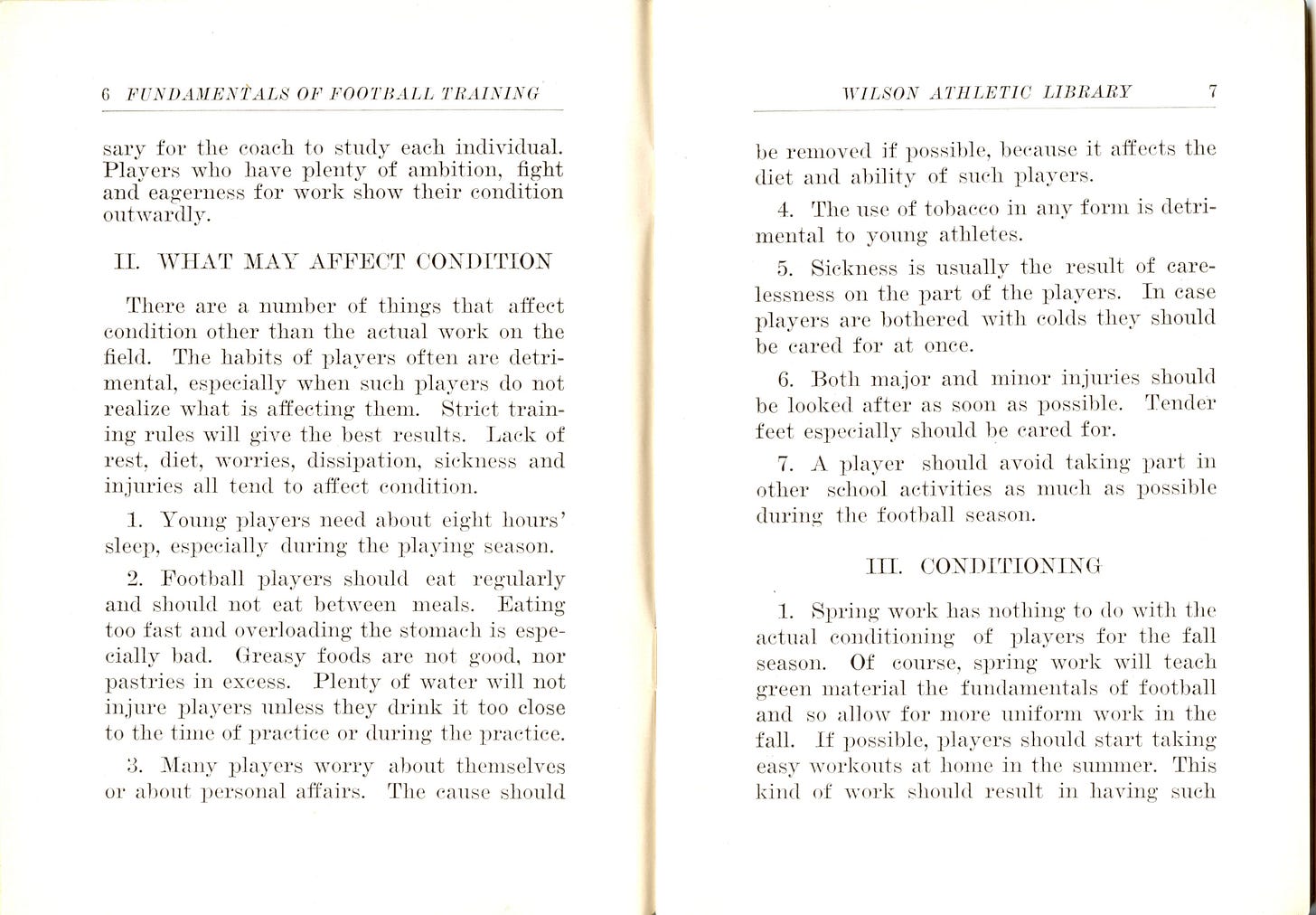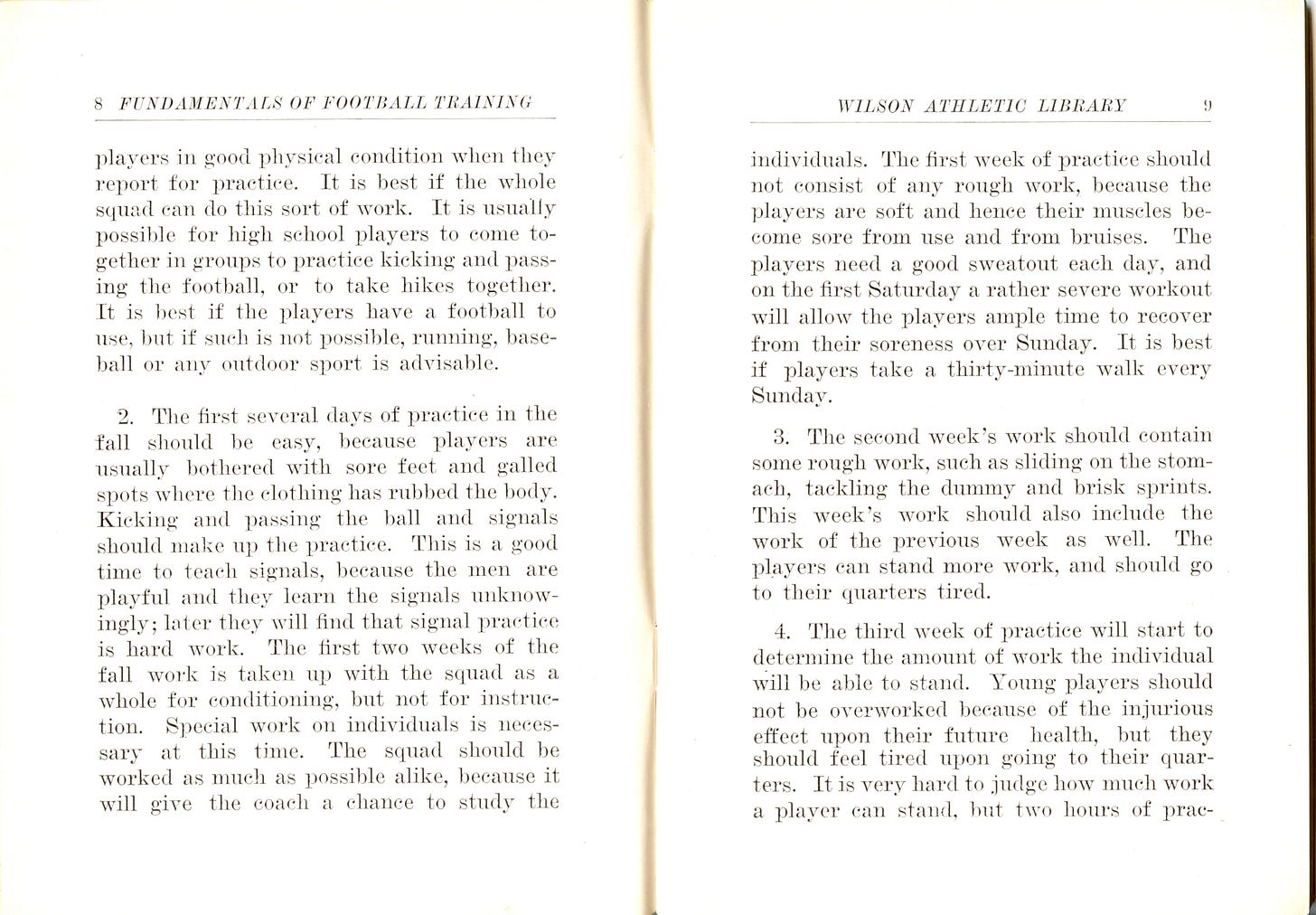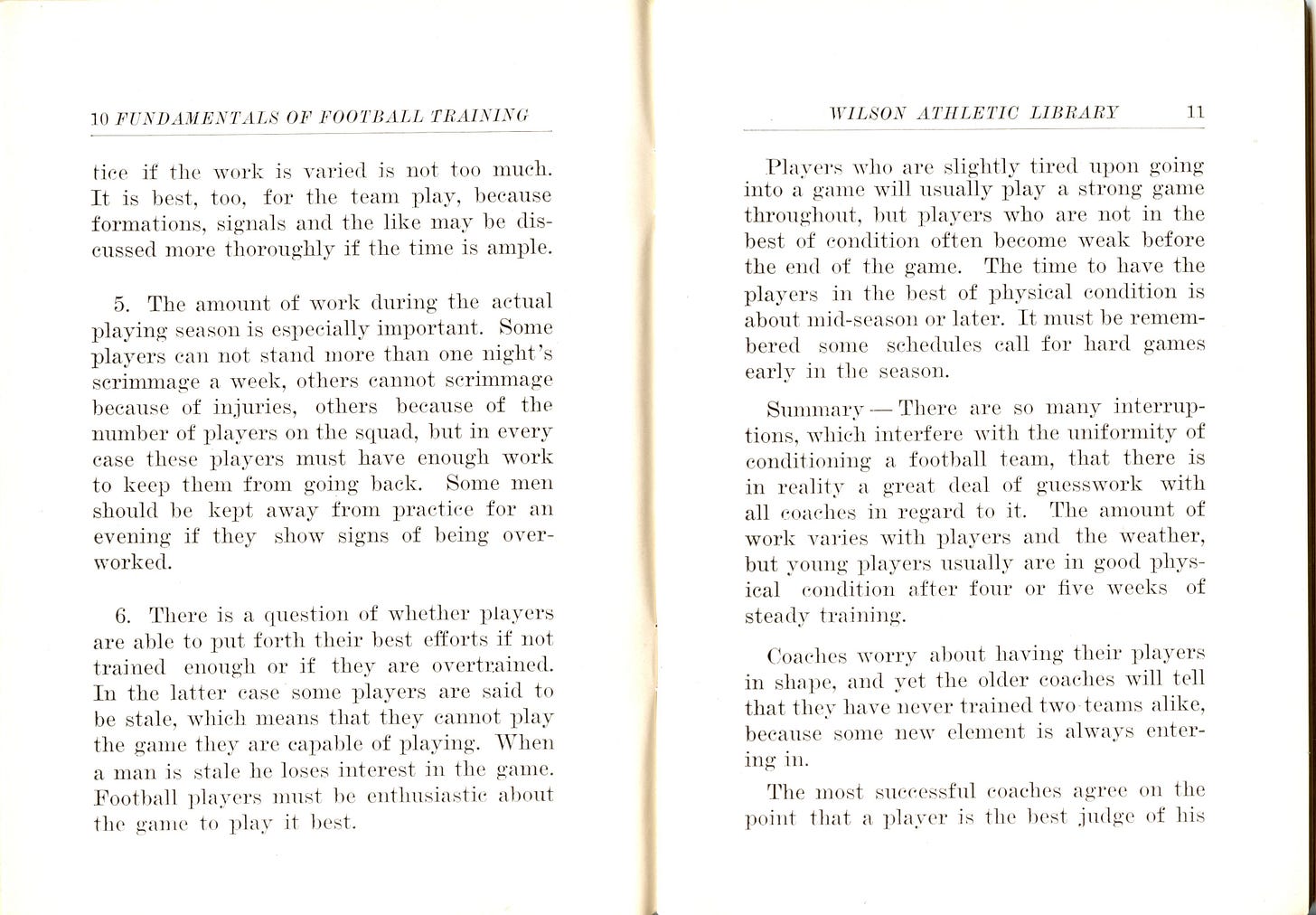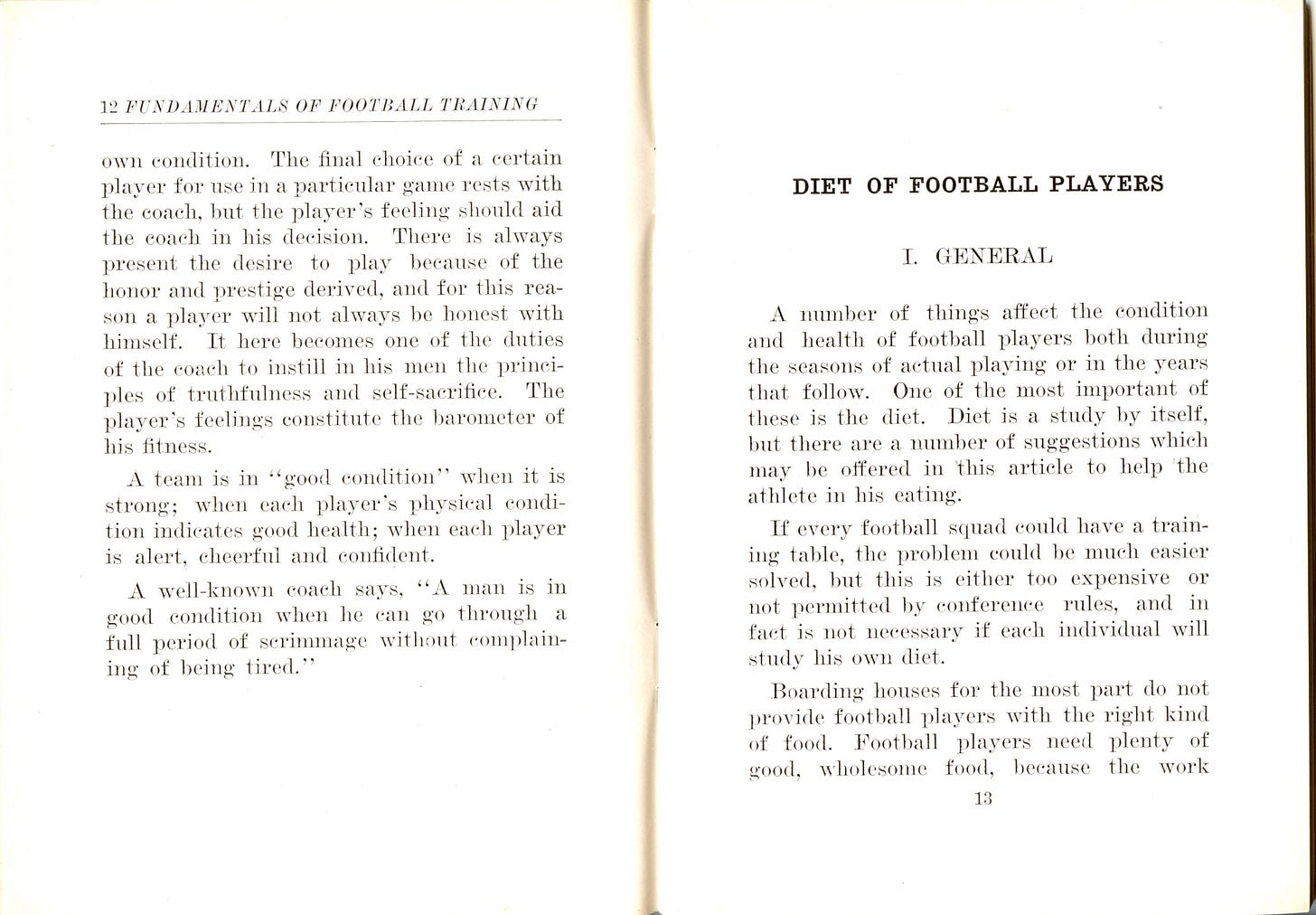Today's Tidbit... How Conditioning Took Shape in 1923
The NFL preseason is underway, the major colleges have been practicing for a few weeks, and the small college, high school, and youth football training are getting started, so lots of boys are getting in shape.
The Fundamentals of Football Training was part of the Wilson Athletic Library. Released in 1923, it was one of eight football volumes, and another 30 or 40 covered other sports. Major John L. Griffith, the Big Ten Commissioner, and George "Potsy" Clark, the Kansas football coach, wrote the volume. Griffith is also known for creating the Drake Relays while coaching at Drake. Clark coached 11 seasons of college football and 10 in the NFL, winning the 1935 title with the Detroit Lions.
The booklet’s Table of Contents shows that the authors included football conditioning topics such as diet, spring and fall training, and play signals and shifts. Single Wing and Notre Dame Box shifts into unbalanced formations were the primary shifts back then.
Section I discusses the difficulty of knowing whether players are properly conditioned, particularly whether they can handle the bumps and bruises that are part of football. Football players needed to be well-conditioned back then. The game had a more rapid pace of play with fewer stoppages. Substitutions were uncommon since players could not return to the game in the same half as the one they exited. The game was also less specialized, so size differences between linemen and backs were less pronounced than today.
Section II addresses factors affecting conditioning and points out that water too close to or during practice is not advised. Given the heavy wool, cotton, and leather uniforms and gear of the time, it is a wonder that more players did not die of heat-related causes. They also recommended getting 8 hours of sleep per night, while tobacco and other school activities should be avoided during the season.
The beginning of Section III argues that players should take in some easy conditioning during the summer, a stance quite different from today’s year-round on-campus conditioning programs for college athletes.
Although a higher percentage of players would have worked on family farms or otherwise engaged in more physical labor than today, players were expected to be poorly conditioned and sore during the first week of fall practice, so conditioning and signal drills were the order of the day. (Signals drills involved calling plays at the line and running them against air.) Only in the second week of fall practice should players tackle dummies, hit the ground, or sprint.
While full contact and tackling began in week three, the authors cautioned coaches against overworking young players. A common theme in newspapers and other reports of the time was the limited number of plays teams installed by the first game of the season. Why they didn’t install more plays while running all those signal drills is beyond me, but it was also an era in which multi-sport athletes and coaches were the norm.
The discussion continues on to conditioning and the amount of scrimmaging needed during the season. Coaches worried endlessly about players getting stale due to overwork or underwork and tried to strike a balance with their athletes.
The final recommendations return to assessing whether a young player is ready for battle and assessing player conditioning. Feedback from players, particularly their level of complaining, was viewed as a primary method of determining conditioning levels.
Nowadays, devoting the first few weeks of fall camp to conditioning and basic instruction is unacceptable at almost any level. While teams are prohibited from full contact during early practices, the assumption is that athletes arrive in good shape. Also, notable is the absence of weight training from the discussion.
Football Archaeology is reader-supported. Click here to buy one of my books or otherwise support the site.







